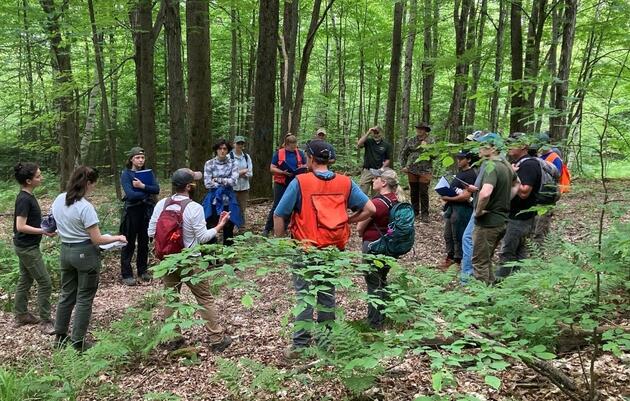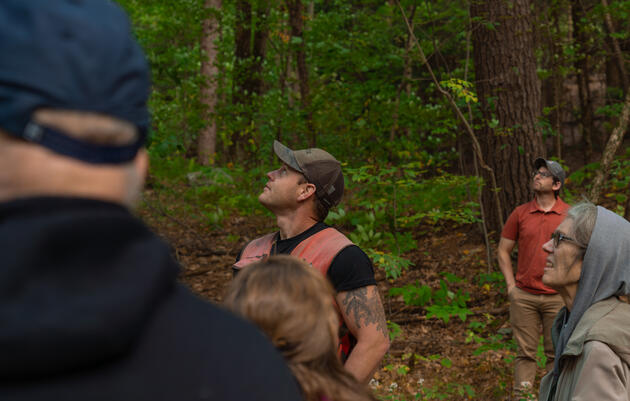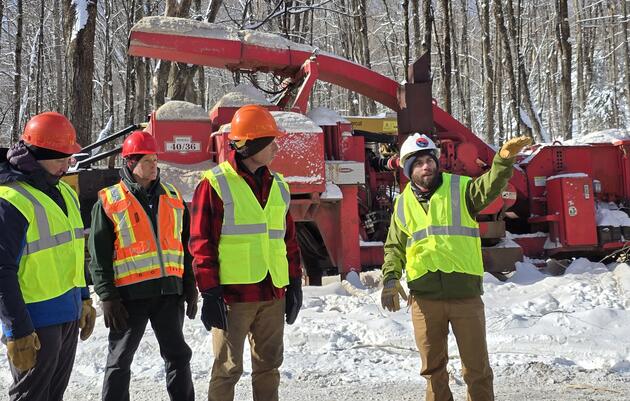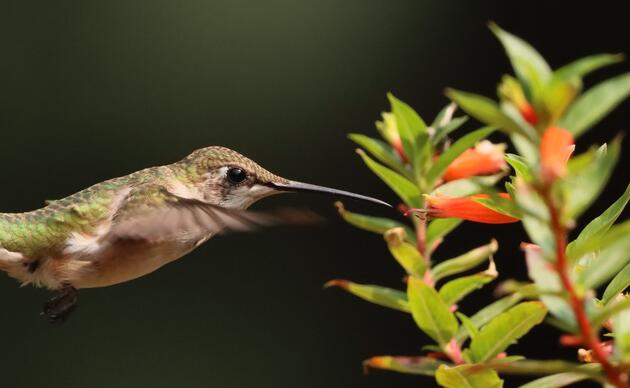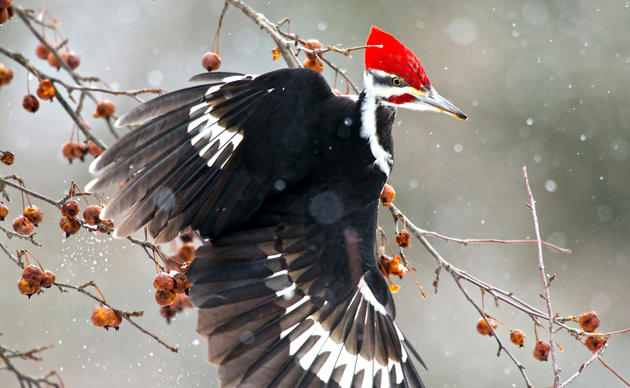Audubon Vermont hosts conservation, education, and policy interns every semester. Interns provide an intern's-eye view of the exciting and important work being done by Audubon Vermont every day. Spencer is one of Audubon Vermont's Conservation Interns for the summer of 2025. Check out our Youth Conservation Leadership Program page for more information and stories!
For the Conservation Team here at the Audubon Vermont, the month of June means lots of bird monitoring at many of the properties we work on across the state, often through formal point count surveys; systematic bird surveys that are used to measure the community of breeding birds at a certain location, or “point”. For the past 3 years, members of Audubon Vermont’s Healthy Forest Program have been using these surveys to track changes in the bird community at Catamount Community Forest and Talcott Woods, a research forest owned by the University of Vermont, in Williston. The goal of this short-term study was to evaluate what effect, if any, forest management had on the surrounding bird community. The goal of the forest management work in this case was creating pockets of young forest and a new generation of growth in an existing middle-aged forest, mimicking the natural disturbance cycles that forests naturally go through.
In September of 2023, forestry work was completed on these properties with the goal of restoring old growth-like conditions The effort, outlined and completed by then-Chittenden County Forester Ethan Tapper, was done in partnership with Tony D’Amato and other researchers from the University of Vermont. This effort is part of the Climate Change Response Framework, a collaborative effort spanning the US and Canada aimed at establishing a network of demonstration sites and research projects focused on integrating climate considerations into forest adaptation strategies for sustaining diverse ecological values across different forest ecosystems. For our part, Audubon Vermont has been aiding with monitoring outcomes for birds by conducting point counts at these sites throughout the study, beginning before treatment (2023) and continuing post-treatment (2024 and 2025).
Surveys happen right around sunrise during the month of June at specific locations within the properties where forest management was set to take place. Along with recording any birds identified by sight or sounds, we also recorded observations of gray squirrels, chipmunks, and red squirrels, as these animals prey on nests of forest birds.
Since the project was designed to alter the conditions in the forest, we expected to see some changes in the bird community too- not just in how many different species were present, but also in the kinds of habitats those birds typically rely on. 2023, the year forest management took place, had the lowest number of bird species (21) recorded over the 3 years, and also the lowest number of mammal species (1). Fast forward to just 2 years after forest management happened, this year, 2025 had the highest number of bird species recorded (27) and the most mammals, with all 3 present. Impressively, of the 9 warbler species recorded over the years, 5 were observed consistently throughout the project, while the other 4 were reported for the first time this year alone. Over the course of the project, 9 of the Birder’s Dozen species were reported, with all 9 observed in the most recent year. 2023 and 2024 had 7 and 4 reported, respectively. One thing that was interesting was that 3 of these species (Yellow-bellied Sapsucker, Blue-headed Vireo, and Scarlet Tanager) were only reported in 2023 and 2025. These species prefer interior, mature mixed hardwood forests, so the fact that they can find suitable habitat just 2 years after the work took place shows the resilience of how ecosystems can recover from disturbances and the high amount of mature forest structure retained in harvested areas. Another interesting result was that 2025 marked the first time that American Woodcock, Common Yellowthroat, Mourning Warbler and Indigo Bunting were reported. These 4 species all require early successional/young forest habitat, which would not be present had this forestry work not been conducted. The forest management work added complexity to the youngest growth (from the forest floor to about head height, also called the understory), which is resulting in a new age class of vegetation to grow and thrive. This creates new habitat for these birds, particularly birds that thrive on open regenerating forests- a.k.a ‘young forest’ or ‘early successional forest’. Vermont Conservation Design sets a target of 3-5% of Vermont’s forests be considered ‘young forest’, and the work that was done in Williston helps achieve this goal. Wood Thrush, another species that is one of the Birder’s Dozen and is in decline, showed up after the management work took place in 2025. This is a species that requires a strong and well-structured midstory to breed and thrive. In forests, a midstory can be defined as the middle horizontal layer, extending from head height to roughly 30 feet above the forest floor. Having this species recorded shows that the forestry work that was conducted created habitat for yet another species that was previously absent. A total of 38 species of birds were recorded during surveys over the 3 years, and only 21 of them were recorded during 2023, the year the forestry work was conducted. The next 2 years yielded more diverse communities of birds than the previous year, respectively, and are now hosting birds that require all kinds of different habitats.

Forest management can often seem confusing and can appear unsettling and destructive. And that’s totally fine. The goal of Audubon Vermont’s Landowner Technical Assistance program is to help advise and educate landowners on how active land management, often using forest management techniques, can be beneficial and improve biodiversity. Forest management traditionally had an economically-centric focus with a goal of maximizing economic returns and outputs from the forest. Now, modern-day forest management focuses on managing forests as complex ecosystems, rather than aiming to maximize forest products. Managing forests as ecosystems involves mimicking and working with the dynamic, natural cycle of disturbance that healthy forests go through. Humans, for better or worse, are very good at preventing disturbances. And part of restoring forests to old-growth-like conditions involves replicating these disturbances to try to return the ecosystem to a patchy, complex and dynamic state. Think of a patchwork quilt, or a tile mosaic, that has many different pieces. A healthy landscape that is resilient to disturbance and has high biodiversity will resemble these things. It will be a patchwork of various different habitats, ages, and types of vegetation. So, if there’s one thing I want you to take away, it's that cutting trees, to create disturbance, can be a conservation strategy with which to restore impacted forests; Perhaps reading this exciting report gets you thinking even more about managing your land in a way that is more adapted to climate change and simultaneously promotes biodiversity. If you are in this boat, then I encourage you to work with an Audubon-Endorsed Forester and check out Audubon’s Landowner Technical Assistance resources to further bird-friendly land management on your property.












